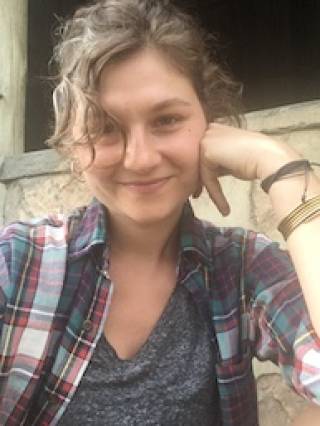The Palaeoecology of Bovidae Fauna at Olduvai Gorge, Tanzania: A Complete Assessment of Beds I-IV and the Abiotic and Biotic Interactions in Plio-Pleistocene Faunal Communities
 |
Email: stefania.cucuteanu.18@ucl.ac.uk Section: Archaeological Sciences Supervisors:
|
- Profile
In recent decades, a palaeoecological perspective has become more pertinent to the field of palaeoanthropology for understanding the ecological role of hominids as part of the larger faunal communities they occupy. Olduvai Gorge is one of the most prominent paleoanthropological sites of human and mammal evolution; located in today’s most biodiverse ecosystem, it is ideally situated to investigate how present species were shaped by key changes in abundance, variation, turnover and extinction patterns during the Plio-Pleistocene. As the most abundant and diverse family of mammals in east African paleoanthropological assemblages, an aggregated record of fossil Bovidae spanning Beds I-IV will be used as a bio-chronological marker to provide a database for reconstructing ancient ecosystems. A trait-based analysis of horncores and teeth will be applied to fossil bovids and modern east African bovid comparative databases to identify changing morpho-space patterns through Bed I-IV at Olduvai that spans key periods of early human emergence. The measure of functional traits of an animal as they relate to environmental correlates is useful for community level analysis of mammal trait distribution across a given landscape. Horncores are indicative of species-specific behaviour, they are distinctive to ecological requirements and thus, can indicate biotic (competition) influences on a local scale. Tooth indices will further measure adaptive changes to the environment based on transitions in climate, landscape and vegetation, further delineating changing specialization within clades. Long-term insights into the effects of ecological trends on functional morphology can shed light on coevolutionary variables through space and time, reflect how the past has shaped present faunal communities, and provide a comprehensive long-term view of evolution at Olduvai Gorge that has been previously lacking.
Education
- BA, Archaeology, The George Washington University, 2007
- MA, Archaeology, UCL, 2008
- Publications
Assefa, Zelalem and Cucuteanu, Stefania, "Dentitions of East Africa Carnivore Digital Archive." 2007. http://humanorigins.si.edu/research/digital-archive-ungulate-and-carnivore-dentition
 Close
Close

